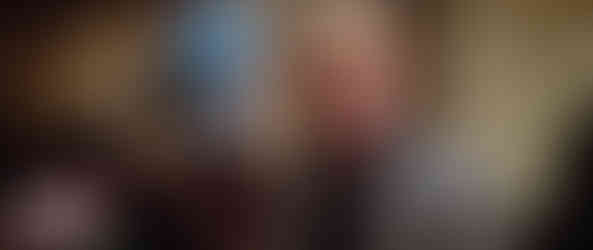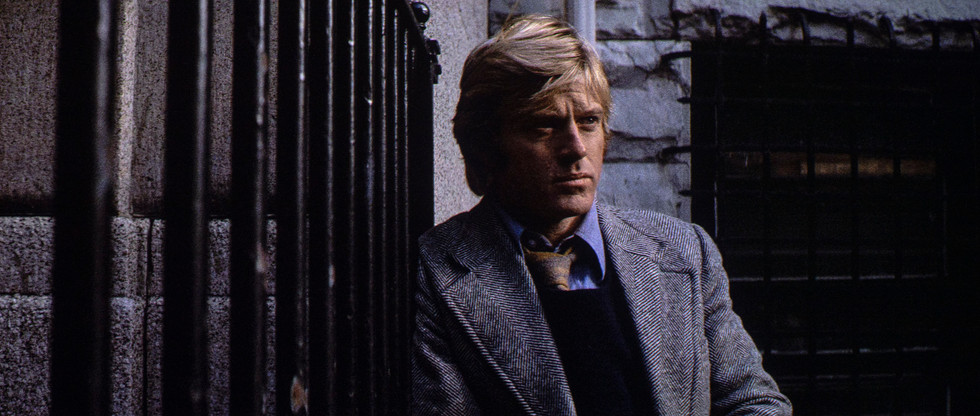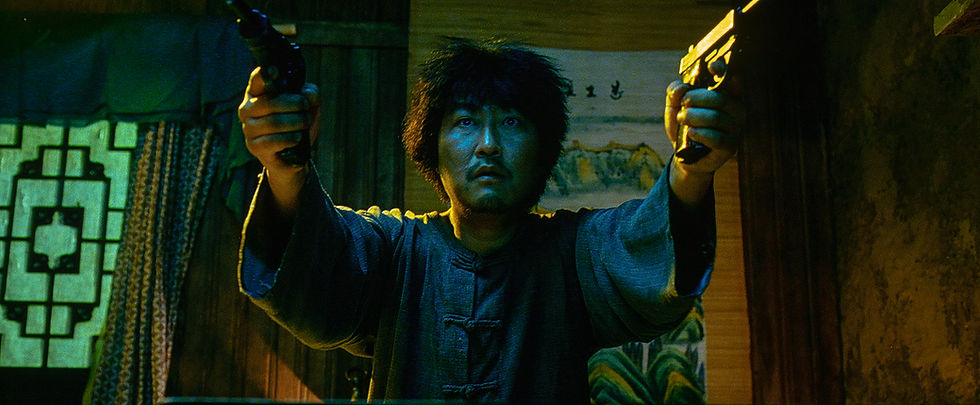Politics and paranoia highlight “Three Days of the Condor”
- Bill Kelley III

- Sep 8, 2023
- 7 min read
Updated: Oct 16, 2023
4K ULTRA HD REVIEW / HDR FRAME SHOTS

Robert Redford stars as Joe Turner, a “reader” at Manhattan’s Upper East Side, American Literary Historical Society, a front for the CIA. When he arrives with lunch he finds all of his coworkers murdered.
(Click an image to scroll the larger versions)
“THREE DAYS OF THE CONDOR”
4K Ultra HD & Blu-ray; 1975; R for violence, profanity and sexuality
Best extra: 2004 documentary on the career of director Sydney Pollack
IN 1960, two young actors from the New York acting scene met on their first movie “War Hunt” (1962), a low-budget black and white film on the Korean War. Sydney Pollack, originally from South Bend, Indiana, played an Army Sergeant, and Robert Redford from Southern California, paid $500 for the role, as an Army Private. The two were both married, with young babies at home and quickly developed a close friendship. “We became, I would say, kindred spirits,” Redford says during a 2008 Time Magazine interview after Pollack’s death from cancer. “Early on, we both shared the same criticism of the film and the same ambitions to do certain kinds of films,” Redford says during the enclosed documentary “Something About Sydney Pollack.”
By 1965, Pollack had moved away from acting into directing, a suggestion from legendary actor Burt Lancaster, and helmed an adaptation of Tennessee Williams’ “This Property is Condemned” (1966). Natalie Wood (“Rebel Without a Cause,” “West Side Story”), starred as Mississippi beauty Alva Starr, and Redford the handsome Owen Legate, a businessman from New Orleans.
In the next decade, Pollack and Redford would collaborate three more times. First, the 19th-century mountain man story of “Jeremiah Johnson” (1972), filmed mostly in Utah’s high country, where Redford had settled down after the success of “Butch Cassidy and the Sundance Kid” (1969). To get the $3.5 million film made, Pollack waived his director’s salary and mortgaged his home.
(1&2) Turner is questioned by Dr. Lappe (Don McHenry) for his late arrival at work. Turner says he faced a “strong headwind” on his motorized bike. (3) Turner asks coworker/girlfriend Janice (Tina Chen) the meaning of a Chinese character. (4&5) Turner runs to the neighborhood luncheonette to pick up the office’s lunch order.
Next, the successful “The Way We Were” (1973), with Redford co-starring opposite Barbra Streisand, received five Oscar nominations, winning Best Original Song. (Sony plans a 50th Anniversary 4K edition later this fall.) It finished No. 5 in the 1973 box office behind No. 1 “The Exorcist” coming out on 4K disc this month, and No. 2 “The Sting,” winner of the Academy Award for Best Picture, in which Redford played 1930s grifter Johnny Hooker opposite Paul Newman as con man Henry Gondorff. For the next three years, Redford was Hollywood’s No. 1 box office draw.
After the Watergate break-in at the Democratic National Committee headquarters and the cover-up by the Nixon Administration, the politically active Redford received a script based on James Grady’s 1974 espionage thriller “Six Days of the Condor.” “I was trying to incorporate my political thoughts, questions, and concerns into the work,” Redford says during a 2003 interview included on the Blu-ray. At the same time, he was preparing to produce and star in an adaptation of the Bernstein and Woodward Pulitzer-Prize-winning “All the President’s Men,” focusing on their reporting of the Watergate scandal for The Washington Post.
The original “Condor” script was “over the top” with CIA agents parachuting over the Washington Monument. “But I thought there was a seed that could be developed,” Redford explains. So, he went to Pollack. “I thought it was half-interesting and I loved the premise, but I hated the way it resolved itself,” Pollack recalls. The storyline surrounded drug smuggling, with crooked CIA agents hollowing out books to hide heroin. Redford and Pollack agreed it wasn’t the story they wanted, and it would need to be “reconstructed.”
They began the rework with Pollack’s rewrite master David Rayfiel (“The Firm,” “Sabrina”). Redford suggested switching the plot from drugs to oil, because “the role oil was playing in our government actions, principally defense, was huge, and it was being disguised.” Plus, the U.S. had just suffered its first oil crisis during the 1973 Arab-Israeli War, when OPEC imposed an embargo against the U.S. for supplying the Israeli military. The price per barrel of oil doubled, then quadrupled, and Americans waited through long lines for gas.
(1-4) Freelance assassins headed by Joubert (Max von Sydow) hit the American Literary Historical Society and kill everyone inside.
Ultimately, to save on the budget, they decided to cut the storyline down to just “Three Days of the Condor.” Redford stars as Joe Turner, a “reader” at Manhattan’s Upper East Side, American Literary Historical Society, a front for the CIA, analyzing books and periodicals for hidden codes from foreign governments or political plots. The information was then fed into a computer and cross-checked to actual CIA operations. On a rainy winter morning, Turner takes the backdoor to bypass much of the rain get to the nearby luncheonette and pick up the office’s lunch order. When he returns, all of his coworkers are died including his girlfriend. “The things he had been reading, turn into hard reality,” Redford says.
Turner grabs the gun from the receptionist’s front desk and rushes to a payphone to call HQ. He identifies himself by his code name “Condor.” He’s told to find a secure place and to call back. Instead, Turner goes to check on Heidigger, the one office guy out sick and finds him dead in his apartment. New York Center Deputy Director Higgins (Cliff Robertson) tries to bring “Turner in,” but his efforts end in an ambush with his department head Wicks – who just flew up from Langley. By day end his best friend Sam Barber (Walter Mcginn) will be dead and paranoid Turner trusts no one.
The excellent supporting cast includes great Swedish actor Max von Sydow as freelancer assassin Joubert, Faye Dunaway as innocent bystander photographer Kathy Hale, whom Turner abducts, John Houseman as Wabash, a high-ranking CIA officer and Addison Powell as Atwood, Deputy Director of Operations in the Middle East.
(1&2) Turner finds all of his coworkers dead and rushes to a nearby payphone to call HQ. The Major (Jess Osuna), the communications officer at the CIA calling center tells him to find a secure place and call back later. (3) New York Center Deputy Director Higgins (Cliff Robertson) is informed of the attack. (4-6) Turner disobeys and goes to check on Heidigger (Lee Steele), the one office guy out sick. Plus, mistakingly goes to his own apartment.
For Redford and Pollack, the timing was perfect. Just as the production was finishing, the U.S. Senate Select Committee headed by Idaho Senate Frank Church, started an investigation of governmental operations within the intelligence community. Its 16-month inquiry uncovered assassination attempts on Fidel Castro of Cuba, President Rafael Trujillo of the Dominican Republic, and the Prime Minister of the Congo; CIA recruitment of journalists to spread propaganda; a NSA “Watch List” of U.S. Senate members including Church and Walter Mondale; CIA experiments of LSD on individuals for brainwashing, and CIA and Army convert operations to stockpile biological agents.
“Three Days of the Condor” premiered in September 1975, finishing at No. 6 on the top-grossing movies of the year. Spielberg’s summer blockbuster “Jaws” topped the list, with “One Flew Over the Cuckoo’s Nest” at No. 2.
EXTRAS
The 60-minute “Something About Sydney Pollack,” is outstanding as Pollack recounts his early life before making movies, moving to NYC to study acting, and transitioning to an “A” list director. The Blu-ray also includes a 24-minute interview between Redford and Pollack highlighting their involvement with “Condor” from start to finish. The 4K disc features two commentaries – one with Pollack recorded in the early 2000s, which is informative but has several silent moments. The better commentary is the recent track with film historians Nathaniel Thompson and Steve Mitchell, which they call, “a journey into ‘70s paranoia and espionage.”
KL Studio Classics 4K vs. StudioCanal 4K
(1&2) Recently Paramount and Kino Lorber rescanned the original 35mm camera negative and the results are much better with clarity and color fidelity than the 2020 scanned by European-based StudioCanal.
VIDEO
First off, this is a new 4K scan of the original 35mm camera negative (originally 2.39:1 aspect ratio, but here 2.35:1), which is surprising since France-based StudioCanal did their own scan, the source for the 2020 France and Germany 4K release of “Condor.” The production was co-financed by Italian-American producer Dino De Laurentiis, who owned the European rights, which StudioCanal now controls, and Redford’s new production company Wildwood Enterprises, with Paramount handling the U.S. release.
This Paramount/KL Studio Classics version is outstanding with more clarity, from the finest detail in facial close-ups to the wide cityscapes of Manhattan including the World Trade Center, framed by cinematographer Owen Roizman (“The French Connection,” “Tootsie”) using Panavision anamorphic lens. The film grain is nicely defined and natural throughout, rendered without any issues and encoded onto a 100 GB disc. The video bitrate varies from the mid-50 Megabits per second to the low 90s, while mostly outputting in the 70s Mbps range. The majority of the time it's running at least 10 Mbps more than the StudioCanal disc.
The biggest difference is the color grading. The previous 4K is tinted toward a bluish-greenish tint, especially in the mid-tones and highlights. Here the HDR10 and Dolby Vision color grading is very neutral, with rich and saturated colors The darkest shadows are darker, while the highlights are much brighter, both without losing any detail. With the 2.35:1 ratio the frame is slightly cropped horizontally compared to the European disc. Who knows which one is correct?
The Blu-ray is also sourced from the new 4K master, and looks quite good in 1080p even without the extra resolution and the limited color spectrum.
AUDIO
The 4K disc and Blu-ray include the original 2.0 soundtrack, plus the upconverted 5.1 DTS HD Master, which adds to the environmental sounds during the opening rain storm and during the gun blasts while providing excellent fidelity for Dave Grusin’s jazzy score. And, yes, the dialogue never fades.
Pollack and Redford made three more films over the years including “The Electric Horseman” (1979), co-starring Jane Fonda; “Out of Africa” (1985) winner of seven Academy Awards including Best Picture and Best Director for Pollack, and “Havana” (1990) in which Redford plays a professional gambler just before the fall of the Batista regime in 1958 before Castro took over.
— Bill Kelley III, High-Def Watch producer
(1-3) Turner prepares to enter the alley so he can “come in.” His best friend Sam Barber (Walter Mcginn) and his department head Wicks (Michael Kane) – who just flew up from Langley are to meet him, but it quickly goes bad. (4&5) Turner abducts innocent bystander Kathy Hale (Faye Dunaway) and they drive to her apartment in Brooklyn.




























































Comments